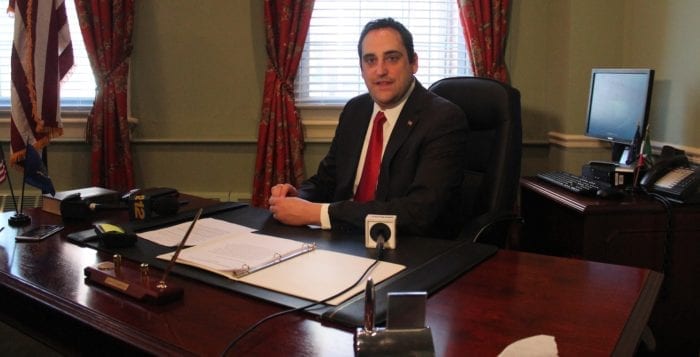Kings Park residents and their elected officials find the idea of building a bridge or tunnel from their backyard to Connecticut illogical and nearly comical.
State Assemblyman Michael Fitzpatrick (R-St. James) has come out as a strong opponent to Gov. Andrew Cuomo (D) statement that it’s time to pursue building a bridge or tunnel to connect Long Island to Connecticut to help reduce traffic — with an eye on Kings Park as a potential site.
“I find it inconceivable that you would destroy Sunken Meadow State Park and put truck traffic on the Sagtikos [State Parkway] to get over to Connecticut,” Fitzpatrick said. “It’s one of these things that everybody in theory thinks is a good idea but no one wants the disruption.”
“I find it inconceivable that you would destroy Sunken Meadow State Park and put truck traffic on the Sagtikos [State Parkway] to get over to Connecticut.”
— Mike Fitzpatrick
Suffolk County Legislator Rob Trotta (R-Fort Salonga) called the governor’s suggestion of building a tunnel “outlandish” given the state is facing a budgetary deficit. He echoed Fitzpatrick in “it’s not going through the center of a state park.”
In his State of the State address Jan. 3, Cuomo revived the decades-old idea of building a bridge or tunnel that would connect Long Island to New England.
“We should continue to pursue a tunnel from Long Island to Westchester or Connecticut,” Cuomo said. “DOT has determined it’s feasible, it would be under water, it would be invisible, it would reduce traffic on the impossibly congested Long Island Expressway and would offer significant potential private investment.”
The concept of a bridge across the Long Island Sound was proposed by Sen. Royal Copeland (D-NY) in the 1930s and has been tossed around for decades. A 1957 Oyster Bay-Rye Bridge study was conducted but never moved to fruition.
In December 2017, New York State Department of Transportation released a final draft of a Long Island Sound Crossing Feasibility Study that examined the potential of building a bridge or bridge-tunnel combination at five different sites. The 87-page study concluded that a bridge or bridge-tunnel combination could be economically feasible at three different locations: Oyster Bay to Port Chester/Rye; Kings Park to Bridgeport, Connecticut; and Kings Park to Devon, Connecticut.
The study concluded that the DOT should move forward with the next step: A five-year environmental evaluation process looking at the impact construction and the bridge would have on the three proposed locations.
“Historically, when you see a bridge, tunnel or major interstate built you wind up with blight.”
— Tony Tanzi
“Gov. Cuomo has directed DOT to conduct additional engineering, environmental and financial analysis to determine the best path forward for this transformative project, which could reduce traffic on Long Island,” said DOT spokesman Joseph Morrissey in a statement. “DOT will closely examine any potential impacts as well as benefits to the local communities as part of the process.”
Tony Tanzi, president of the Kings Park Chamber of Commerce, said that he is not in favor of the project. He doesn’t see any benefit for Kings Park.
“I think physically these generally wind up with a blighted area,” Tanzi said. “Historically, when you see a bridge, tunnel or major interstate built you wind up with blight.”
Fitzpatrick agreed, citing that the construction of the Verrazano-Narrows Bridge forever changed the character of Staten Island. The assemblyman said he’d rather see Cuomo focus on the $5.6 billion Long Island Rail Road transformation plan to electrify the Port Jefferson line and build a third rail to improve traffic conditions.
Trotta suggested the state consider road widening to add lanes and reduce congestion, or start by fixing potholes on Route 25A.
If the state moves forward with construction plans for a bridge or tunnel in Kings Park, it is sure to face opposition.
“If the state tries to jam it down our throats, they’re in for one hell of a fight,” Fitzpatrick said. “It’s not the right place for it.”





















